Style Your Open Kitchen Shelving Like a Pro
http://decor-ideas.org 11/07/2013 09:10 Decor Ideas
We've all admired pictures of perfectly styled open kitchen shelving — those neat stacks of dishes are so appealing, and going without upper cabinets promises to bring an airy feel to small spaces. But how practical are open shelves to maintain? What are you supposed to put on them? And where do you put everything else? If you would love to try open shelving in your own kitchen but are not sure where to start, here's help. We've got all of the dos and don'ts about styling beautiful and practical open shelving.
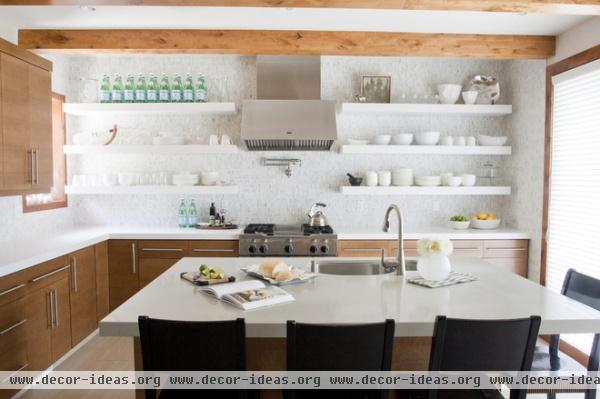
Do: Start on empty. It is simply impossible to see what you are doing if you try to style your shelves when stuff is already on them. Yes, it's a project to completely empty shelves, but it will be worth it. And if it seems overwhelming, just work on one shelf at a time. Remove everything and wipe down the shelf before you go on.
Do: Borrow goods from the pantry for graphic appeal. Anything with a cool label (like the San Pellegrino bottles shown here) can work as a decorative element in a group — think cans of imported tomatoes, pretty tea tins and jars of jam. These items are ideal for stashing on upper shelves, because you won't need to access them that often.
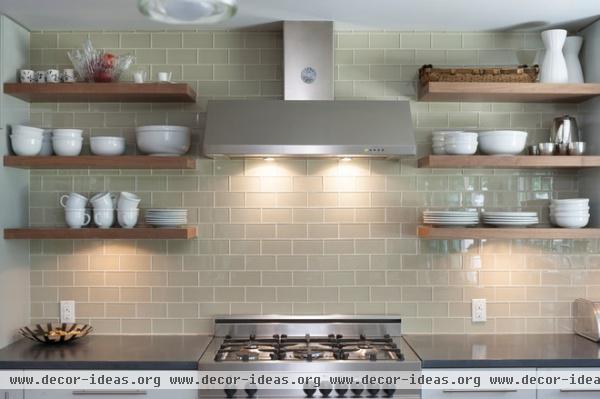
Do: Think about what you use daily. As for the lower shelves, be practical about what you choose to place there. This is a good spot for favorite coffee mugs, everyday plates and bowls, and basic water glasses and wineglasses. If you find that not all of your everyday stuff fits on your shelves, put some away. Do you really use 30 mugs or wineglasses daily?
Don't: Put extremely heavy items on top shelves. Even if you rarely use that big, heavy pot or casserole dish, think twice before hoisting it onto the highest shelf. Lifting and lowering heavy items from high places can be unsafe, and even if your shelving is strong, open shelves in general are not meant to hold as much weight as regular cabinetry. Be on the safe side and stow your biggest pots down low.
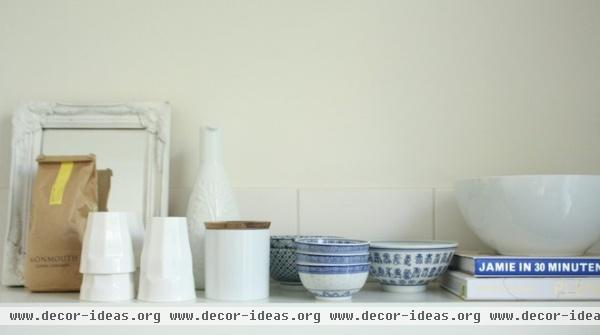
Do: Look for serendipitous color connections. Pay attention to color in the kitchen — can you find a thread of a certain hue running through it? The colors of cookbook spines, teacups, food packaging and fruits and veggies can all become part of an intentional scheme.
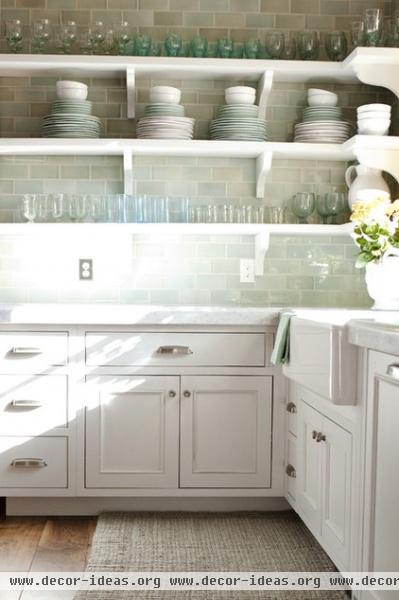
Do: Edit what you put on display. Ideally you will have a mix of open shelves and closed cabinets, so not everything you own will need to be on display. Remember that as you are filling those shelves.
Stick with a matched set of dishes and glassware, or at least keep your choices to coordinating colors. Remove one-offs that look out of place, freebie cups, cluttered-looking kitchen tools and anything with dangling cords — those things should go into cupboards and drawers, not be out in the open.
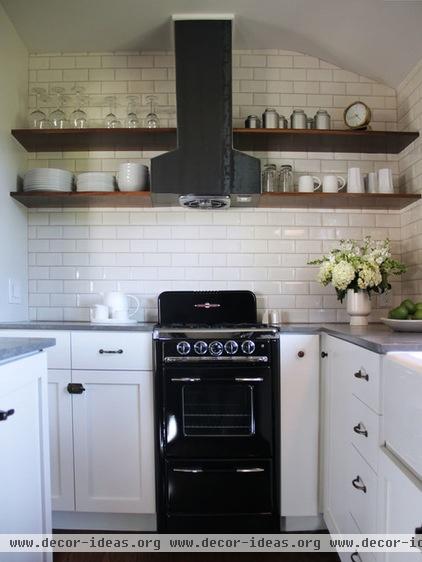
Don't: Overstuff a small kitchen. Open shelving can be a godsend in a small space, making your room appear significantly larger than the actual square footage.
Although it may be tempting to cram shelves full, overstuffed shelves defeat the space-enhancing effects. In a small space, you must be extra vigilant about editing the items on those shelves. Stick with one color (you can't go wrong with white) and pare back to only the essentials.
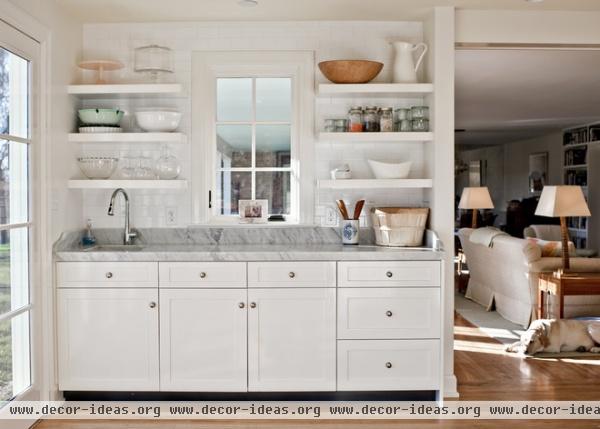
Do: Make stations. Consider kitchen tasks, like baking or making coffee, when filling your open shelves and group items accordingly. It's convenient to have all of the necessary items in one spot, and grouping things this way usually works well visually, too. For instance, stack cake stands, pie dishes, ramekins and mixing bowls on the shelf above where you store your mixer.
More about kitchen work zones
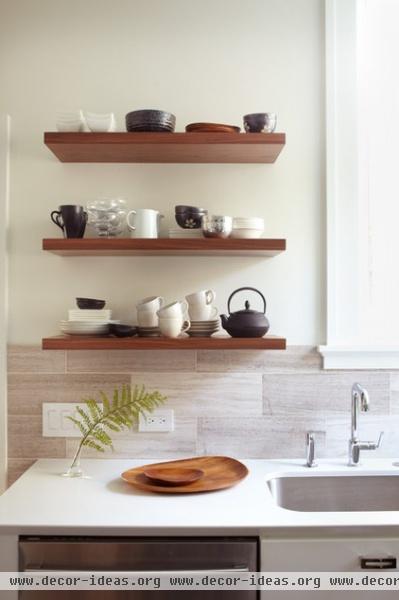
Do: Stack 'em up. Keep your arrangements visually interesting by stacking and piling small items together. Teacups and saucers look more appealing in slightly tipsy stacks than in regimented rows. Stack bowls atop plates, and smaller platters on large; stick utensils upright in a glass or vase.
There are no hard and fast rules to styling; just play around and see what looks right to you.
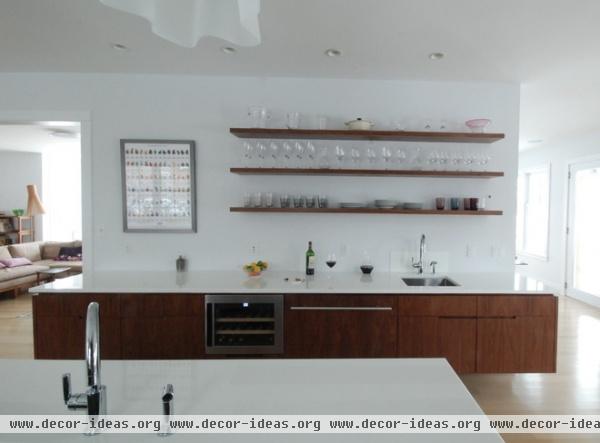
Do: Focus on one or two materials. Wood, ceramics, glass, metal — too many materials in one arrangement can look cluttered and unfocused. Stick with mainly one or two for a sleek, chic look.
Don't: Set out glass if you live in earthquake country! If you live in California or another region where earthquakes can be an issue, lots of glass on open shelving can be a recipe for disaster.
Keep your glassware behind closed cabinet doors, preferably ones with magnets or another safety system that will prevent the doors from flying open in an earthquake. On open shelves consider installing a small lip to keep items in place during small quakes.
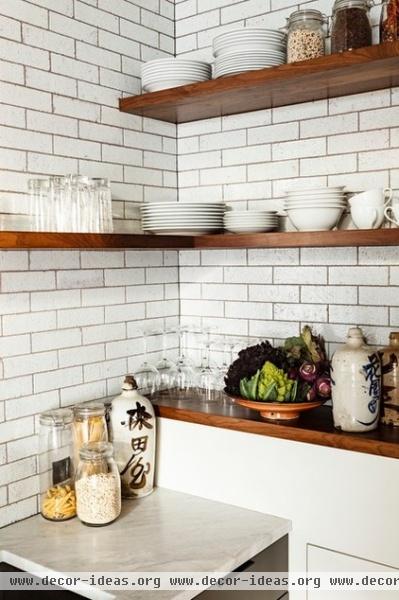
Do: Seek out pretty storage containers. It can be quite handy to have frequently used dry goods within reach on open shelves, but original packaging is hardly ever attractive and is often messy.
Neaten things up and help your supplies stay fresh longer by decanting ingredients into sturdy, airtight glass containers. Even basics like oats, flour and rice look sort of artsy in simple glass jars lining a shelf.
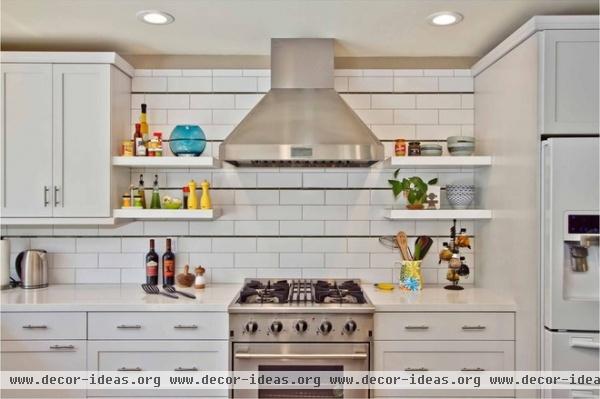
Do: Consider proximity. Shelves near the dishwasher? Use them to store your everyday dishes, and you won't have to make a big trip to put them away. Shelves near the stove? Stock them with frequently used cooking tools and spices. Keeping what you need at hand will make cooking and washing up an easier, more pleasant experience.
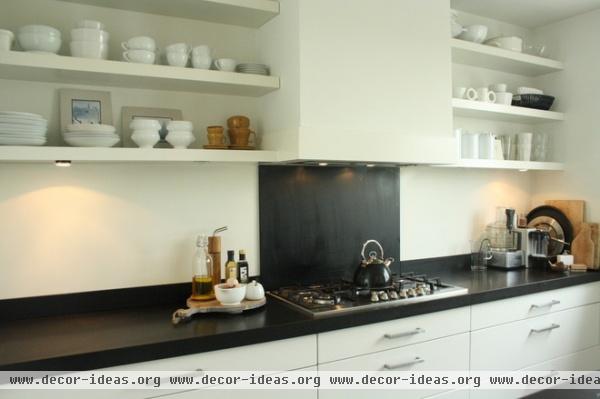
Don't: Neglect to dust. It's a fact: Open shelves collect dust and even grease if they are near the stove. Storing frequently used items on open shelves will eliminate some of the need to dust and clean, since you will be regularly using and washing these things anyway. But higher shelves and less-used pieces will get grimy over time. The best approach is to try to stay on top of it by dusting and wiping down surfaces regularly.
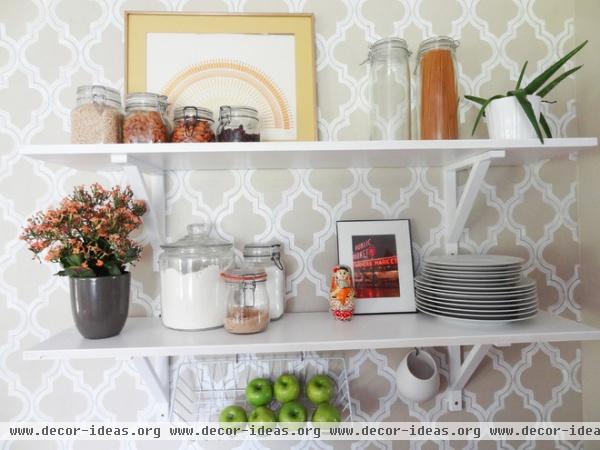
Do: Use decorative details judiciously. Open shelves are a natural place for injecting some personality into your kitchen; just don't go overboard. A few framed art prints tucked behind the dishes as seen here, a plant (fresh herbs would be most welcome) and perhaps one or two decorative objects are all you need.
Not sure if you've gone too far? Use this rule of thumb: If you cannot easily get to something you need because your decor is in the way, it's too much.
See how to make open shelves like these
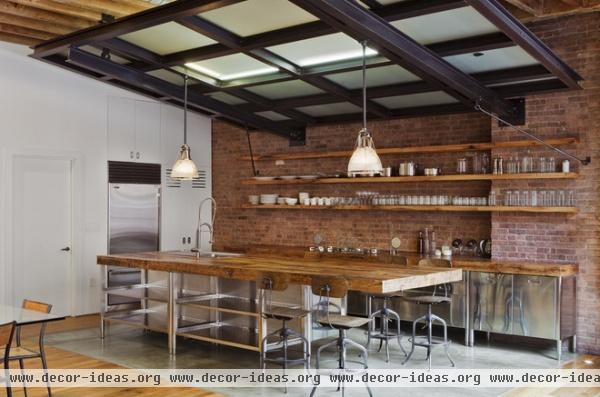
Don't: Worry about filling the highest shelf. In kitchens with a superhigh top shelf, it can be hard to know what on earth to put up there. I say don't worry about it — just leave it bare. Sure, you could put plants there (but they'd be hard to water), fake plants (but they might look tacky), cookbooks (how would you reach them easily?) or decorations (which would only gather dust), but why? An empty shelf is easy to clean, makes ceilings look higher and makes a room look less cluttered.
Tell us: Do you have open shelving in your kitchen? How do you feel about it?
Related Articles Recommended












